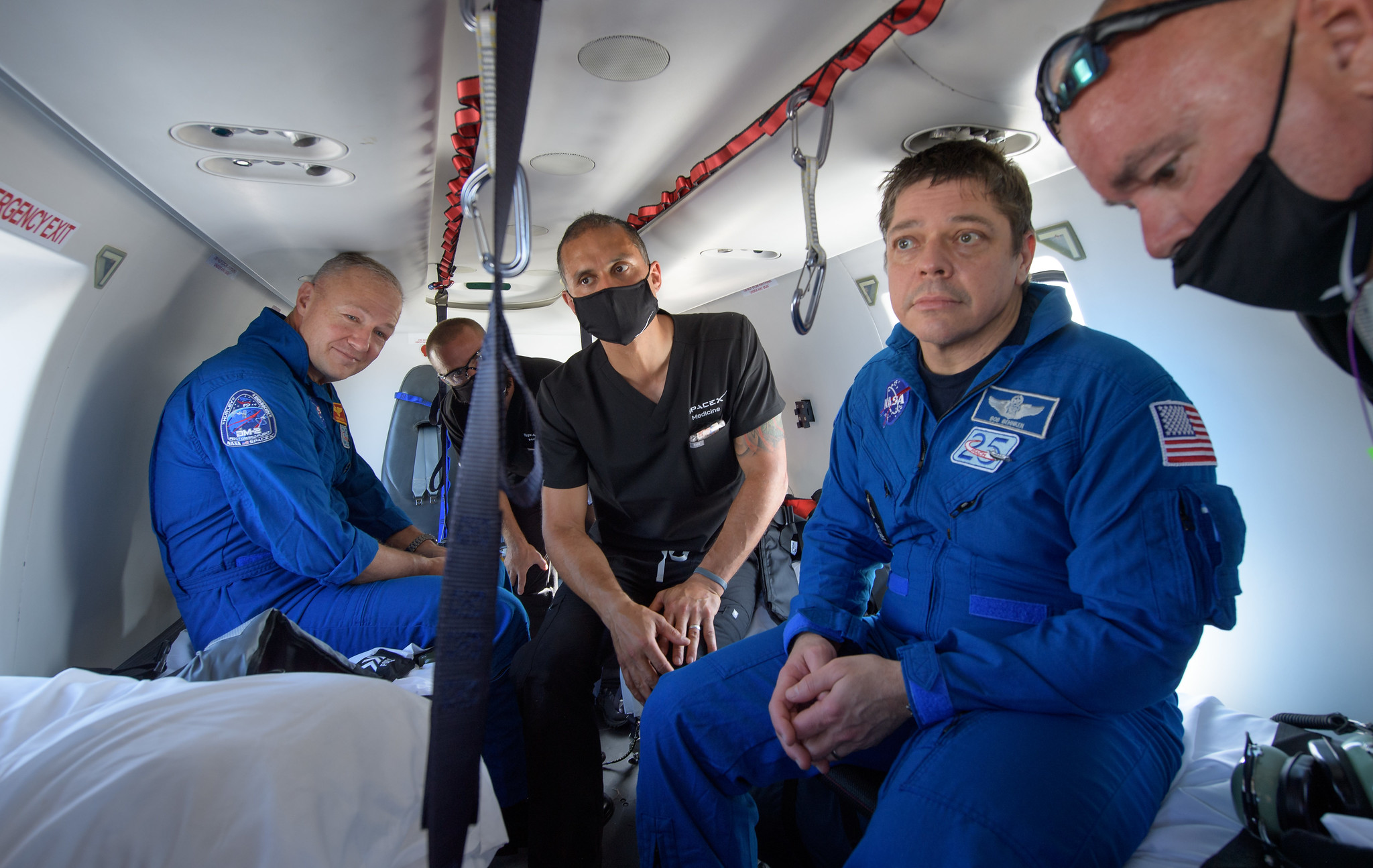
Only days after their triumphant return to Earth, and the first splashdown of a U.S. astronaut crew since the Apollo-Soyuz Test Project (ASTP), a fit and healthy Doug Hurley and Bob Behnken have described the “humbling experience” of returning American citizens to space aboard an American spacecraft, atop an American rocket, and from American soil, since the end of the Space Shuttle Program. In comments provided from NASA’s Johnson Space Center (JSC) in Houston, Texas, on Tuesday, the two veteran astronauts—both of whom wrapped up the third space voyages of their respective careers—outlined their surprise at the flawless performance of Dragon Endeavour, the dynamism of their re-entry through the atmosphere and their first experiences back on the Home Planet.
Perhaps the only disappointment is that neither Hurley or Behnken have passed 100 cumulative days in space and will not (at least for now) wear the “100-Day” patch on their flight suits. Counting 64 days on orbit this time around, and experience from their previous shuttle flights, Behnken has now logged a total of 93 days and Hurley 92 days.
Launched last 30 May, they dubbed their Crew Dragon as “Endeavour” in honor of the first shuttle that they both flew, before docking smoothly at the International Space Station (ISS) the next day. They were welcomed aboard by Expedition 63 Commander Chris Cassidy and his Russian crewmates Anatoli Ivanishin and Ivan Vagner and over the next two months Hurley and Behnken supported more than 100 hours of science, conducted over 23 hours of spacewalking, evaluated the habitability of Dragon Endeavour and played the roles of medical officers, maintenance men, plumbers and computer fixers.
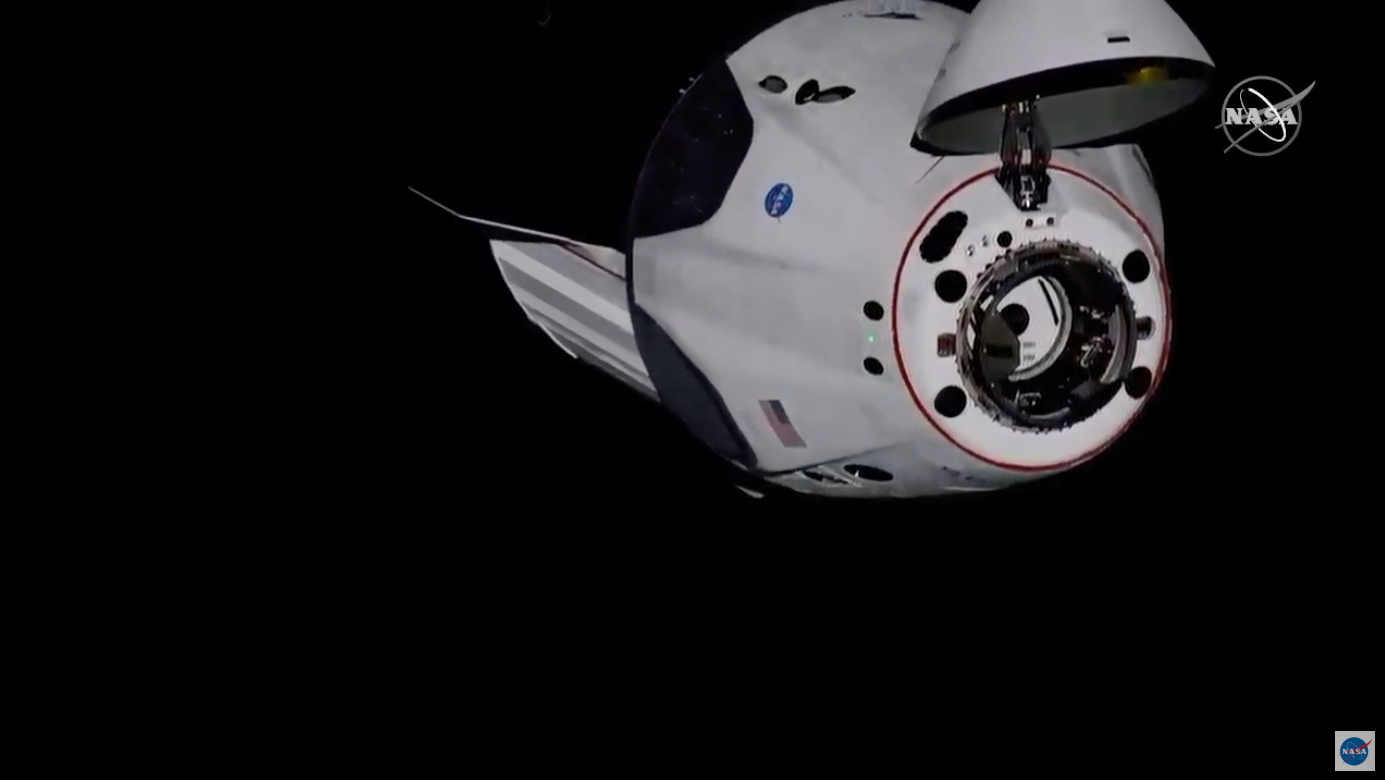
They carried a small sequined toy dinosaur, Tremor, on behalf of their sons, which secured its own claim to fame during the mission, and Behnken observed his 50th birthday in space on the very same day that his wife—fellow astronaut Megan McArthur—was named to Crew-2, which will fly aboard Dragon Endeavour next spring. Undocking from the ISS on Saturday, Hurley and Behnken spent 19 hours in free-flight, before executing a parachute-assisted splashdown in the Gulf of Mexico, off the Pensacola coast of Florida.
Having piloted two shuttle missions, including the reusable orbiter’s final flight in July 2011, Hurley served as commander of Demo-2 and labeled it “neat to think about” having the distinction of bridging two discrete programs in his career. In his remarks, he praised both NASA and SpaceX and was “almost kind of speechless” at how well the mission actually went. He fervently hoped that their success would bring “a little bit of brightness to a pretty tough 2020” and declared that after post-flight debriefings and 45 days of physical rehabilitation—including aerobic and stretching exercises and agility drills—both he and Behnken look forward to spending time with their families, who “really had to sacrifice over the last five years” whilst they were in dedicated training for the Commercial Crew Program. Behnken in particular looks forward to helping his son look after a new puppy and supporting McArthur as she prepares for her upcoming mission to the ISS.
As the first U.S. astronauts to return from space to a water landing since Apollo-Soyuz Test Project (ASTP) crewmen Tom Stafford, Vance Brand and Deke Slayton in July 1975, their perspective this time around was quite different from their earlier shuttle experiences.
Hurley described re-entry as “a fairly dynamic event” and, responding to a question about the large number of pleasure boaters who controversially approached Dragon Endeavour in the water, admitted that he had “absolutely no awareness” of their presence until later on Sunday. He explained that such problems had been anticipated and discussed with NASA and SpaceX teams prior to launch—and even diplomatically expressed appreciation for “the folks wanting to participate in the event”—but warned that private boaters getting so close to the spacecraft “can’t happen” again as it did last weekend.
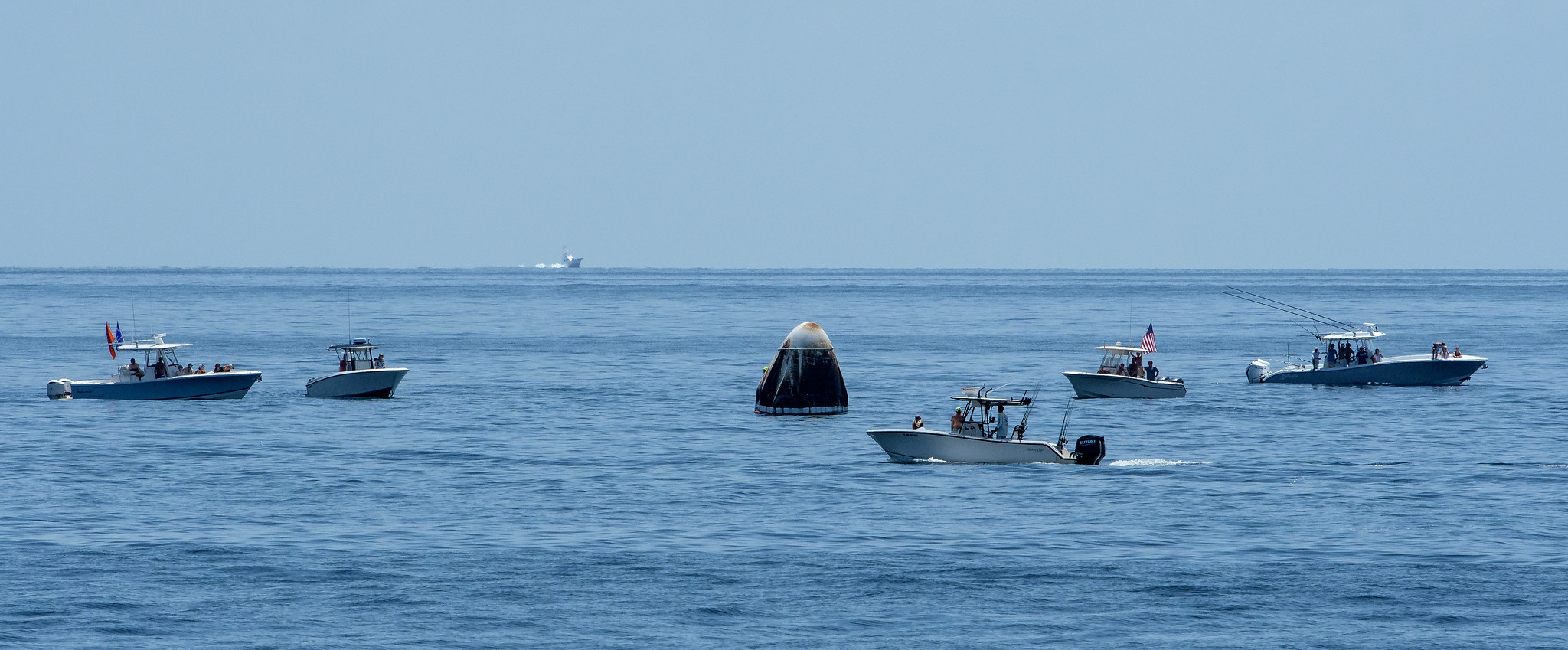
Part of the reason for that is the presence of highly toxic nitrogen tetroxide and monomethyl hydrazine propellants aboard Crew Dragon, the testing for which actually delayed the departure of Hurley and Behnken from the spacecraft and onto the deck of the Go Navigator recovery vessel. Even as the boaters gathered outside with their flags and banners, Dragon Endeavour’s windows had gotten so smeared from the demands of re-entry that, in Hurley’s words, “you could basically tell that it was daylight, but very little else”. Indeed, he could not see much through the windows until the SpaceX fast boats arrived to perform initial “sniff tests” for leaks and began attaching the rigging to lift the spacecraft.
Behnken described the re-entry process as an extremely rapid state of affairs, although he savored the opportunity to look at the Home Planet in the handful of hours the crew enjoyed in free flight after Saturday’s undocking. Both men had been granted ample opportunity for Earth photography during their eight weeks aloft, the astonishing quality of which even prompted Hurley’s wife (fellow astronaut Karen Nyberg) to jokingly wonder why she was always the dedicated photographer on family vacations. But from their perspective, Hurley and Behnken felt that images of our beautiful planet provided at least a measure of distraction at an acutely troubling time for us all.
In the hour or so between Dragon Endeavour’s deorbit “burn” at 1:56 p.m. EDT and the actual splashdown at 2:48 p.m. EDT, it was obvious to Behnken that “things were picking up quick”. The spacecraft seemingly “came alive” as it entered the sensible atmosphere and both men could clearly hear the rumble outside, as Crew Dragon’s thrusters pulsed “almost continuously” to keep them tightly aligned on their re-entry corridor.
“It doesn’t sound like a machine,” he said. “It sounds like an animal.” Certainly, it was not hard to draw parallels with Behnken’s comments in June about the animalistic nature of flying the Falcon 9 and their own dragon-like Dragon off the launch pad and into orbit.
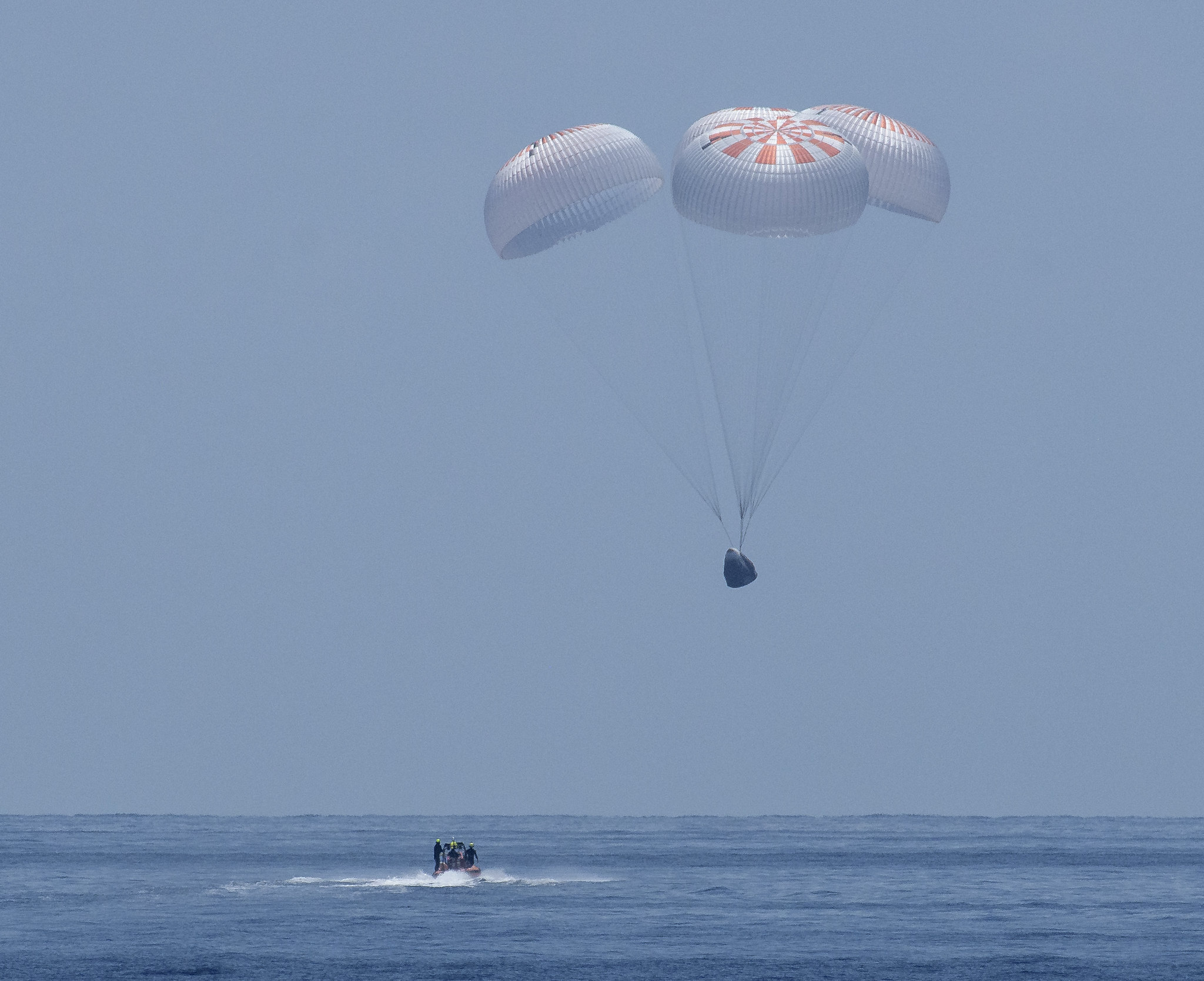
The carefully-timed events were also readily apparent in terms of their impact. The separation of the spacecraft’s trunk felt like being “hit in the back of the chair with a baseball bat” and Behnken noted a “pretty significant jolt” as the drogue and main parachute canopies unfurled. Clouds rushed by at an accelerated rate as they descended further towards the Gulf and, at the instant of splashdown, both men noticed the water splash all over Dragon Endeavour’s besmirched windows.
Ever the test pilot, retired Marine Corps Col. Hurley expressed great surprise at how by-the-book the re-entry turned out to be. “I personally expected there to be more challenges,” he told his virtual audience, noting that even on their shuttle missions there were events which transpired that were out of the ordinary. But from start to finish Demo-2 “went just like the simulators”. Hurley expected a measure of divergence from pre-flight plans, particularly in terms of maintaining effective attitude control in the thicker air between the altitudes of 20,000 feet (6,000 meters) and 10,000 feet (3,000 meters). But Dragon Endeavour remained “rock solid” all the way through parachute deployment.
And after splashdown, as they bobbed in the water, the two men put in a satellite call to Flight Director Anthony Vareha, seated at his console in Mission Control. “Hi, it’s Doug and Bob and we’re in the ocean,” came the message. Tweeting his response later on Sunday, an astonished Vareha could only retort words to the effect of: “Yeah, I can see that!”
Both Hurley and Behnken came take great pride in their mission. But for Hurley, the ability to transition from a relatively short flight of only a week or two and instead complete a multi-month ISS stay allowed them to demonstrate what Crew Dragon could really do. This was particularly important in terms of understanding how it would respond in “quiescent” mode for several weeks to give Crew-1 astronauts Mike Hopkins, Victor Glover, Shannon Walker and Soichi Noguchi a good sense of how their own ship will perform. In fact, Hurley and Behnken will tag-up with Crew-1 next week.
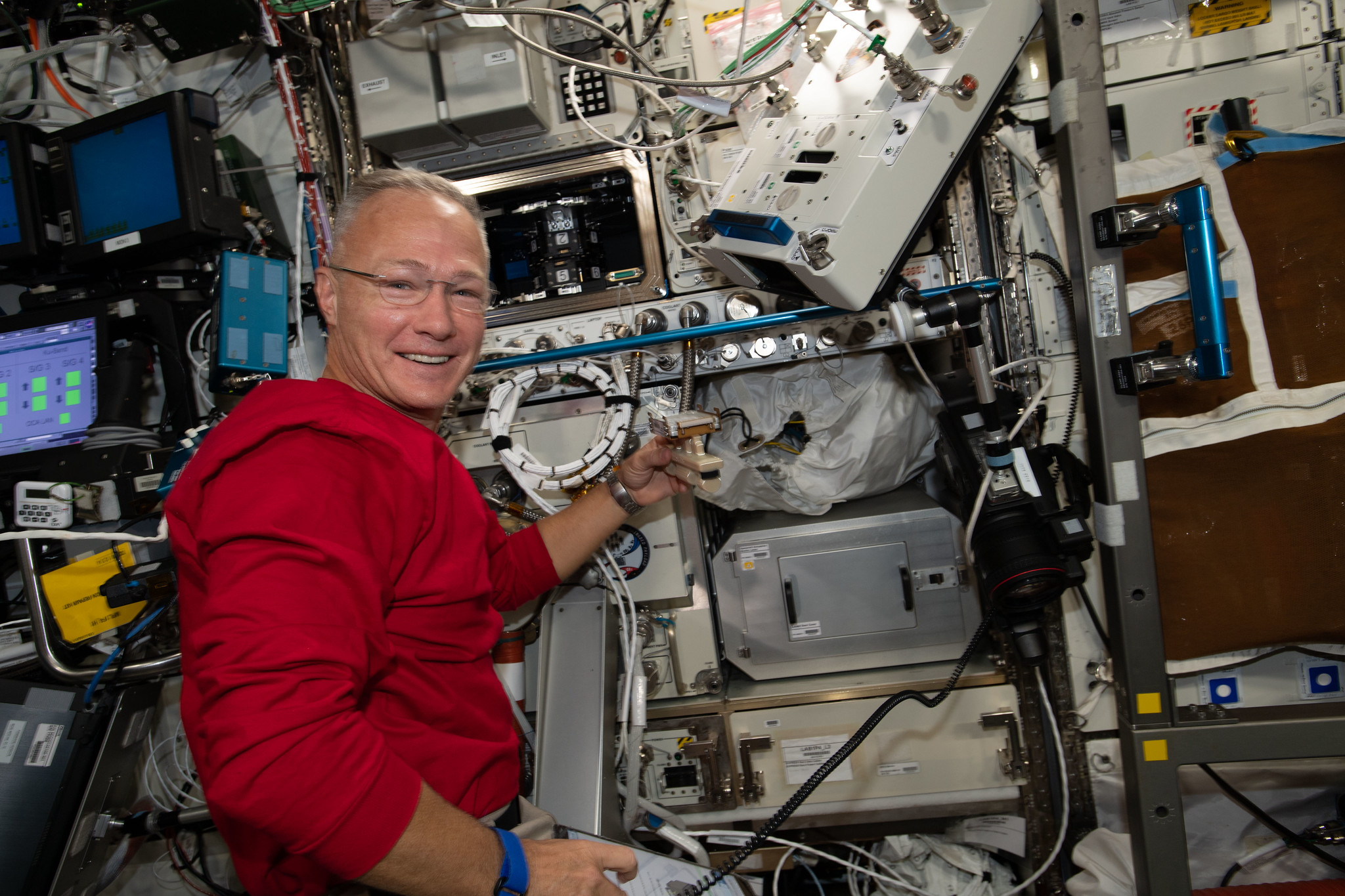
And what of Tremor himself, the sequined dinosaur which drew its own army of fans during its eight weeks in space? For now, he will likely alternate between Hurley and Behnken’s respective houses, although as their sons Jack and Theo grow up the astronauts to find Tremor a more permanent home. Behnken joked that the boys “might request something in trade” if the dinosaur was donated to the Smithsonian and did not discount the possibility that Dragon Endeavour herself could someday wind up an exhibit there.
But not yet. For Dragon Endeavour has at least one more space voyage ahead of it. “When it’s used up,” Behnken assured his audience, that might happen. “It’s just not used up yet.”




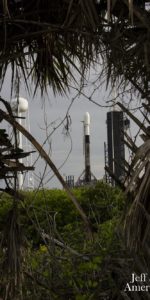
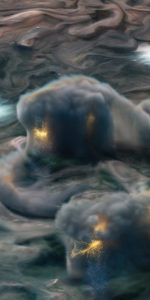
Obviously masks don’t protect you or they would be required to wear them like the attendants they are flying with. The attendants have nothing to fear, cuz their patients have just done a 60+ day quarantine.
Double standards everywhere.